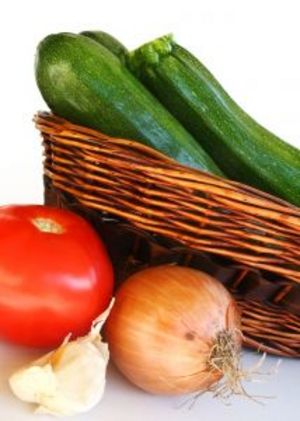Many cities in the U.S. are experiencing significant bursts in the Hispanic population. That being said, the number of Latin businesses in these areas has increased dramatically. Peruse these areas and you’ll find some very interesting grocery stores. Many of these stores are called “Farmer’s Markets”, carrying fresh produce (though sold indoors) along with other supermarket staples. A lot of people overlook these stores or pass them up altogether; perhaps the apparent language barrier intimidates some. Others just don’t ever think to stop in and check out the merchandise. In any case, your shopping experience will be greatly enhanced by a Spanish-English dictionary and a sense of adventure. The next time you drive past the neighborhood Mercado (Spanish for “market”), pull over and you just might discover some pleasant surprises.
#1- Many Hispanic supermarkets are less crowded than traditional grocery stores.
Depending upon the area of town you live in, you may be pleasantly surprised that these stores have an easy ebb and flow of customers. Again, this will typically depend on the population in your area, and perhaps the time of day. But because these stores are often out of the way (and overlooked by people like you)-they tend to be less crowded during peak hours.
#2- Latin household products are sometimes cheaper than American name brands.
In taking a stroll through a local Farmer’s Market in metro Atlanta, I discovered that some of the Latin-brand laundry detergent was a bit cheaper than some of the national brands. Perhaps this is because the store gets deals from the foreign manufacturers. In either case, these products are often just as good (or better) than some of the national brands; and you’ll frequently pay less for them.
#3- Have you ever visited an authentic panadería?
Panadería is Spanish for bakery. And while you may be having visions of the exquisite cakes and pies in your local Publix supermarket, you will probably be very pleasantly surprised by the desserts and pastries baked in Latin supermarkets. Additionally, the foreign breads and rolls baked there are in a class of their own. Ultimately, bread is bread. But in sampling some of these treats, you might detect a flavor that is very different from the traditional breads you’re used to eating. The selection and prices on items in a Hispanic panadería will certainly vary. But their inventory is certainly worth sampling at least once.
#4- There is a wide variety of spices and sauces indigenous to Latin and Caribbean countries.
Visit the spice aisle at a local Hispanic grocery and you’ll find a lot of spices that you’ve probably never heard of before. Many of these spices are in their “raw” state. Chilies are dried whole. Peppercorns are large, ready to be ground. You can even find brown sugar cut straight from the cane and packaged in large plastic bags. Jamaican curry powder, real peppermint, and even dried shrimp shells can be found on these exotic shelves. Again, these spices are often more authentic, and cost much less than buying the name brand manufactured products.
Furthermore, your Mexican fiesta menu will be greatly improved by a visit to a Latin supermarket. The assortment of salsas, sauces, and other ingredients pertinent to an authentic Mexican meal is obviously outstanding. Getting used to preparing meals with some of these ingredients may take some trial and error. But in the end, you’ll probably be grateful that you took the chance.
#5- Many farmers’ markets carry live seafood and other meat delicacies.
Have you ever watched an episode of “Chopped” on the Food Network and wondered where the show’s producers found some of the foreign delicacies the contestants were charged with preparing? It is quite possible that they shopped at a local farmer’s market. These stores sometimes carry live lobster and crab-along with some interesting delicacies like pickled pig ears, beef tongue, or even chicken feet. These foods may not exactly be your cup of tea. But for the adventurous chef, being able to get a hold of these items is pure bliss.
#6- Latin stores carry a wide variety of juices and soft drinks.
Unlike your local Kroger or Publix, you’ll be delighted to note that the selection of beverages is practically endless. Hispanic grocery stores are notorious for offering an extensive array of natural nectars, juices, and fruit sodas-in addition to the typical brands you’d see in customary supermarkets. Some of these juices and nectars are great for preparing exotic gourmet dishes. Others are simply delectable to drink.
#7- Meat and produce prices are often much cheaper.
Another thing you’ll notice at many Latin supermarkets is that the prices on select cuts of meat are less expensive than ordinary grocery stores. For example, where a standard package of Perdue boneless/skinless chicken breast tenders might cost you between $4 and $7 dollars, you can purchase them at a farmer’s market for as little as $2.50 per pack; and the quality of freshness is just as good, if not better. The same goes for certain cuts of beef and pork.
The produce selections in these stores tend to vary, perhaps because of where the fruits and vegetables are obtained. But in many Latin markets, you’ll often discover that a good portion of the vegetable staples is considerably cheaper than other stores. Another example would be whole red peppers, which tend to be fairly expensive. In your average store you’ll probably pay at least $3.99 or per pound. In a Latin store you can often purchase them for half that amount. Additionally, you might find other exotic fruits and vegetables that you would never see in traditional supermarkets.
SOURCES:
www.hispanicmarketweekly.com
www.publix.com
www.yelp.com









